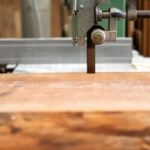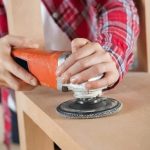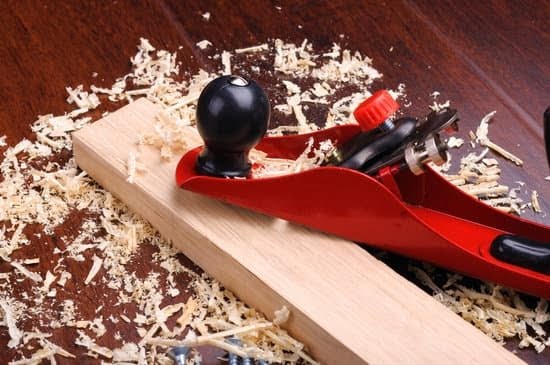Woodworking is a craft that demands precision and attention to detail. Every cut, joint, and angle must be measured accurately to ensure a proper fit, alignment, and aesthetic appeal of the final product. Whether you are a beginner or an experienced woodworker, understanding how to measure angles correctly is crucial in achieving high-quality results.
Accurate angle measurements play a significant role in woodworking projects. They determine the perfect fit between wooden pieces and ensure consistent alignment throughout the construction process. When angles are measured incorrectly, even by just a few degrees, it can lead to ill-fitting joints or uneven surfaces. This not only compromises the structural integrity of the project but also affects its overall appearance.
For beginners in woodworking, learning how to measure angles correctly is essential. It lays the foundation for mastering other woodworking skills and techniques. By understanding and utilizing accurate angle measurements from the start, beginners can establish good habits and avoid costly mistakes down the road. Developing this skill early on will empower craftsmen to tackle more complex projects confidently.
In this article, we will delve into various aspects of measuring angles in woodworking. We will discuss the essential tools used for measuring angles such as protractors, bevel gauges, and combination squares. Additionally, we will explore common measurement terminologies associated with angles in woodworking. Furthermore, we will provide step-by-step guides on how to use these tools accurately and offer tips for advanced techniques as well as common mistakes to avoid.
By honing your angle measurement skills, you will be equipped with one of the fundamental abilities necessary for successful woodworking projects. So let’s dive into this guide on how to measure angles woodworking and unlock endless possibilities in your craft.
The Essential Tools for Measuring Angles in Woodworking
Protractors
One of the most commonly used tools for measuring angles in woodworking is a protractor. Protractors are typically made of clear acrylic or metal and feature a circular shape with degrees marked along the edge. They come in different sizes, ranging from small handheld ones to larger ones that can be mounted on a workbench. Protractors are versatile tools that can measure both inside and outside angles, making them suitable for a wide range of woodworking projects.
When choosing a protractor, consider the clarity of the markings and the ease of use. Look for protractors with clearly defined degree increments for precise measurements. It is also helpful to find one with a pivoting arm or ruler attachment for more convenience when working with larger pieces of wood.
Bevel Gauges
Another essential tool for measuring angles in woodworking is a bevel gauge, also known as an angle finder or sliding T-bevel. Bevel gauges consist of two parts: a handle and a blade attached at an adjustable angle. The blade can be adjusted and locked into place to match the desired angle, allowing for accurate measurements.
When using a bevel gauge, it is important to ensure that it fits securely against the surface being measured to avoid any gaps or inconsistencies. This can be achieved by lightly pressing the blade against the surface while adjusting it until it aligns perfectly with the angle being measured. Bevel gauges are especially useful when dealing with complex angles or irregular shapes where regular protractors may not provide accurate results.
Combination Squares
Combination squares are versatile tools that not only allow you to measure angles but also assist in marking lines and checking for perpendicularity. They consist of a ruler, an adjustable head, and usually include different types of measurement scales such as inches and centimeters. Combination squares are particularly useful when measuring 45-degree angles or checking the squareness of corners.
To measure angles with a combination square, adjust the head to the desired angle and tighten it securely. Then, place the ruler along one side of the angle and read off the measurement on the scale. Combination squares are handy because they eliminate the need for multiple tools when marking and measuring various aspects of a woodworking project.
Choosing the right tool for measuring angles in woodworking depends on several factors, including project requirements, personal preferences, and level of experience. It is advisable to have a variety of tools in your workshop to cater to different situations and ensure accurate measurements for all your woodworking projects.
Understanding Angle Measurement Terminology
Angle measurement terminology is an essential component of understanding and accurately measuring angles in woodworking. By familiarizing oneself with key terms and conventions, woodworkers can ensure precise measurements and achieve quality results in their projects.
When discussing angle measurements, the most common unit is degrees. A degree is a unit of measurement that divides a complete circle into 360 equal parts. Each degree is further divided into 60 minutes (denoted as ‘) and each minute into 60 seconds (denoted as “).
Radians are another unit of measurement used for angles, especially in advanced mathematical calculations. Unlike degrees, radians measure angles based on the radius of a circle. One radian is defined as the angle that subtends an arc equal in length to the radius of the circle.
Understanding different types of angles is also important in woodworking. An acute angle measures less than 90 degrees, while an obtuse angle measures between 90 and 180 degrees. A right angle, which is commonly seen in woodworking projects for creating square corners, measures exactly 90 degrees.
Woodworkers should also be aware of common angle measurement conventions such as clockwise and counterclockwise rotation. Clockwise rotation refers to turning an object or moving along an arc in the same direction as the hands of a clock, while counterclockwise rotation refers to moving in the opposite direction.
By grasping these fundamental angle measurement terms and conventions, woodworkers can communicate more effectively about angles and make accurate measurements for their projects. Whether it’s cutting precise joints or aligning components, understanding angle measurement terminology is vital for ensuring accurate and successful woodworking endeavors.
Measuring Angles with a Protractor
The protractor is one of the most commonly used tools for measuring angles in woodworking. Whether you are working on a simple project or a complex design, knowing how to accurately measure angles is essential for achieving precise and professional results. In this section, we will provide a step-by-step guide on how to measure angles using a protractor in woodworking.
To begin measuring an angle with a protractor, place the base of the protractor along one side of the angle at its vertex. Make sure that the center point of the protractor aligns with the vertex of the angle. The baseline of the protractor should be parallel to one side of the angle.
Next, determine whether your angle is acute (less than 90 degrees), obtuse (greater than 90 degrees), or right (exactly 90 degrees) so that you can select the appropriate scale on your protractor. Most protractors have two scales – an inner scale for measuring acute angles and an outer scale for obtuse angles.
Once you have aligned and positioned your protractor correctly, read and record the measurement where the other side of your angle intersects with the degree markings on your chosen scale. It is important to be as precise as possible when reading and recording this measurement to ensure accuracy.
It’s worth noting that there are different types of protractors available, each designed for specific uses. For example, a transparent or adjustable protractor allows you to see through it, making it easier to align with angled lines or shapes. Digital protractors provide digital readings rather than relying on manual interpretation of markings.
As with any measurement tool, it’s important to avoid parallax errors when using a protractor. Parallax errors occur when your line of sight is not perpendicular to what you are measuring, resulting in inaccurate readings. To minimize parallax errors, position yourself right in front of your workpiece and ensure the protractor is flat against the surface.
Measuring angles with a protractor is a fundamental skill in woodworking. By practicing this technique, you will develop the ability to accurately measure angles and achieve precise cuts, joinery, and overall alignment in your woodworking projects.
| Common Protractors | Uses and Features |
|---|---|
| Circular protractor | Ideal for measuring simple angles up to 180 degrees. |
| Miter gauge protractor | Used for measuring angles on miter saws or table saws. |
| Semicircular or adjustable protractor | Allows for measuring acute and obtuse angles on curved surfaces. |
| Electronic/digital protractor | Provides digital readings for quick and accurate angle measurements. |
Measuring Angles with a Bevel Gauge
Measuring angles with a Bevel Gauge is a crucial skill for any woodworker. A bevel gauge is a versatile and precise tool that allows the user to determine the angle of an existing object or create angles accurately. It consists of a handle with a metal blade that can be adjusted and locked at various angles.
To measure an angle with a bevel gauge, start by loosening the locking screw on the handle. Then, align the blade with one surface of the angle you want to measure or replicate. Once aligned, tighten the locking screw to secure the blade in place. Now, you can transfer this angle to your workpiece or use it as a reference for other measurements.
One advantage of using a bevel gauge is its ability to measure complex angles or irregular shapes. The adjustable blade allows you to match the contours of intricate designs or non-standard angles accurately. This makes it especially useful for projects that involve custom joinery, such as fitting two pieces together at a specific angle or creating unique shapes.
It is important to note that when using a bevel gauge, precision and accuracy are key. Ensure that the locking screw is tightened securely, and double-check your measurements before making any cuts or adjustments. The more practice you have with a bevel gauge, the better your understanding of angles and their relationships will become, ultimately improving your woodworking skills.
| Bevel Gauge | Features |
|---|---|
| Adjustability | The blade can be adjusted and locked at different angles depending on project requirements. |
| Accuracy | A bevel gauge provides precise measurements for both standard and irregular angles. |
| Versatility | It can be used for replicating existing angles or creating new ones in woodworking projects. |
Measuring Angles with a Combination Square
A combination square is a versatile and essential tool for accurate angle measurements in woodworking. With its multiple functionalities, it provides woodworkers with the ability to measure various angles and ensure precision in their projects.
Using a Combination Square for 45-Degree Angles
One of the common uses of a combination square is to measure 45-degree angles. This is particularly important when it comes to making precise miter cuts or joining two pieces of wood at a perfect right angle. To measure a 45-degree angle with a combination square, follow these steps:
- Place the long side (the blade) of the combination square flush against one edge of the material you want to cut or join.
- Tighten the locking mechanism on the head of the combination square to secure it in place.
- Rotate the head until the short side (the tongue) aligns perfectly with the opposite edge of the material.
- 4. Double-check that both sides are aligned and make any necessary adjustments before marking or cutting.
Measuring Perpendicularity with a Combination Square
Another useful function of a combination square is measuring perpendicularity, which refers to ensuring that two surfaces are at an exact 90-degree angle to each other. This is crucial for constructing frames, cabinets, and other woodworking projects that require precise alignment. Here’s how to use a combination square for measuring perpendicularity:
- Position one side of the combination square’s blade against one surface.
- Lock the head in place.
- Slide the tongue along another surface and check if it remains perfectly parallel to itself as well as perpendicular to the first surface.
- Make any necessary adjustments until you achieve 90 degrees at both surfaces.
It’s important to note that combination squares come in different sizes and materials, so choose one that fits comfortably in your hand and meets your project requirements. Additionally, regularly check and adjust the accuracy of your combination square to ensure reliable measurements. With practice and familiarity, a combination square can become an indispensable tool in your woodworking arsenal.
Advanced Techniques for Measuring Angles in Woodworking
In addition to the basic tools discussed earlier, there are advanced techniques and tools that can be used for measuring angles in woodworking. These techniques are particularly useful for intricate projects or when a high level of precision is required. Two advanced methods commonly employed in woodworking are the sine bar and digital angle finders.
Sine Bar
A sine bar is a precision instrument used for accurately measuring angles in woodworking. It consists of a flat, parallel bar with uniformly spaced holes along its length. The sine bar is typically used in conjunction with an adjustable angle block and a dial gauge. To measure an angle using a sine bar, follow these steps:
- Secure the sine bar on the work surface using clamps or holdfasts.
- Place the adjustable angle block on top of the sine bar.
- Adjust the angle of the block until it aligns with the desired angle measurement.
- Use a dial gauge to measure the vertical distance between the workpiece and the reference surface of the adjustable angle block.
- 5. Repeat this process at multiple locations along the workpiece to ensure accuracy.
The advantage of using a sine bar is that it allows for precise measurements without relying on visual alignment or guesswork. This method is especially beneficial when working with complex angles or when high accuracy is crucial.
Digital Angle Finders
Digital angle finders are electronic devices that provide highly accurate measurements of angles. They consist of a base with an arm that pivots and a digital display screen that shows the angle measurement. Digital angle finders offer several features such as magnetic bases, hold function, and recalibration options.
To use a digital angle finder, follow these steps:
- Place the base of the finder firmly against one surface.
- Adjust the arm until it rests against another surface or reference point.
- Read and record the displayed measurement from the digital screen.
Digital angle finders are known for their ease of use, speed, and accuracy. They are particularly useful for professionals who require precise measurements in a short amount of time.
It is important to note that while advanced techniques and tools like the sine bar and digital angle finders offer enhanced precision, they may not be necessary for every woodworking project. Beginners can start by mastering the basic methods discussed earlier before exploring more advanced options. Additionally, it is advisable to match the complexity of the technique with the requirements of the project to ensure optimal results.
Tips and Common Mistakes to Avoid when Measuring Angles in Woodworking
Woodworking projects require precise angle measurements to ensure proper fit, alignment, and aesthetics. To help you achieve accurate angle measurements consistently, here are some tips and common mistakes to avoid when measuring angles in woodworking:
- Use the right tool: Selecting the appropriate tool for measuring angles is crucial. Consider using a protractor, bevel gauge, or combination square based on your project requirements and personal preferences. Each tool has unique features that can assist in achieving accurate measurements.
- Check for level surfaces: Before measuring angles, make sure your work surface is level. Uneven or sloping surfaces can affect the accuracy of your measurements. Use a level to ensure that your work area is flat before proceeding.
- Avoid parallax errors: When using a protractor or any other measuring instrument with a scale, it’s essential to align your eye with the measurement point directly above it to avoid parallax errors. Parallax occurs when the measurement scale appears shifted due to viewing it from a different angle.
- Measure multiple times: To further enhance accuracy, measure an angle multiple times and compare the readings for consistency. This helps minimize any minor errors caused by factors like tool inaccuracies or human error.
- Double-check layout lines: Accurate layout lines are crucial when measuring angles in woodworking projects. Ensure that your lines are straight and properly aligned with the tools you are using for measurement.
Common mistakes to avoid when measuring angles in woodworking include:
- Inaccurate tool placement: Placing your measuring tool incorrectly can result in inaccurate angle measurements. Make sure the reference points of your tool align precisely with the points being measured on your workpiece.
- Rushing through measurements: Taking time and being patient during angle measurements is essential for achieving accurate results. Rushing can lead to errors or imprecise readings.
- 3.Not considering wood movement: Wood is prone to move due to changes in humidity and temperature, which can affect the accuracy of your angle measurements. Take into consideration the potential movement of the wood and make adjustments accordingly.
By following these tips and avoiding common mistakes, you can achieve precise angle measurements in your woodworking projects. Remember, practice makes perfect, so keep refining your skills and techniques to master the art of angle measurement in woodworking.
Conclusion
In conclusion, mastering the art of angle measurement is crucial for achieving high-quality results in woodworking projects. Accurate angle measurements are essential for ensuring proper fit, alignment, and aesthetics in woodwork. By understanding the importance of precise angles and learning how to measure them correctly, beginners can enhance their woodworking skills and produce impressive pieces.
Throughout this article, we have discussed the essential tools for measuring angles in woodworking, including protractors, bevel gauges, and combination squares. We have provided tips on selecting the right tool based on project requirements and personal preferences. Additionally, we explored angle measurement terminology, such as degrees and radians, and introduced common conventions used in woodworking.
Step-by-step guides were provided on how to measure angles using protractors, bevel gauges, and combination squares. Advanced techniques like digital angle finders and sine bars were also introduced with their applications in specific woodworking scenarios explained. Furthermore, we addressed tips to consistently achieve precise angle measurements while avoiding common mistakes that beginners often make.
In conclusion, it is clear that accurate angle measurements play a vital role in the success of woodworking projects. Aspiring woodworkers should practice and refine their skills by incorporating these measurement techniques into their projects. By doing so, they can advance their abilities and create beautiful pieces with confidence knowing that their angles are accurately measured for a perfect fit every time.

Hi everyone! I’m a woodworker and blogger, and this is my woodworking blog. In my blog, I share tips and tricks for woodworkers of all skill levels, as well as project ideas that you can try yourself.





